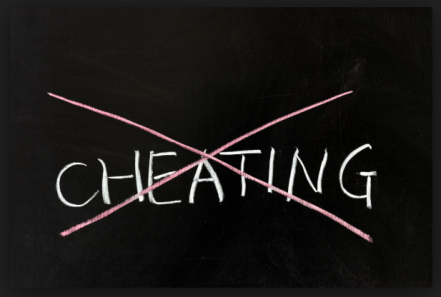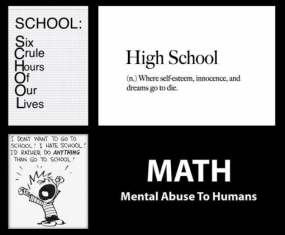
Every morning of every day
what supports do you rely on
to help along the way?
We wake up in the morning,
our phones honk, chime or blast our favs
and we struggle to get out of bed
to music, horns and crashing waves

Thank goodness for many alarm clocks
as some need extra help to get up again
and a dog licking their face
because there are a few who are tier 3 before 10.

Our coffee brews with the push of a button
or sometimes on its own,
with programmable toasters and microwaved eggs
as we look at the schedules on our phone.
The shirt we picked up from the dry cleaner
is nicely pressed and ready to go,
we even sometimes ask our spouse
if our tie matches our socks… or no?

We get into our car with a keyless remote
and our seat adjusts to our height,
we program our GPS device
and then chose the guiding voice that’s just right.
We have choices of radio, books or music
to listen to as we drive
or we pick up a friend on the way to work
to chat with as we offer a ride.
An app buzzes to tell us to take our meds
as we roll in to park at our job,
and we look at the camera as we back up our car to park,
and lock it with the click of a fob.

We talk to our colleagues about questions and topics
throughout our day as we work,
we bring and share snacks with those who may have forgot
and are hungry while they do paper work.

On the weekends we have fun, and hangout with our friends,
we may choose to go to a movie or show.
Or relax at home, order pizza that someone else made,
as we celebrate our life with those we know.
And at the end of those extra hard weeks
or the last few days before spring break,
you might even catch us with a beverage in hand
or a little extra something in our shake.

We build the life that we want, and seek supports that we need
to get through all our day’s pace,
choice and celebration we find
guide us to our success, and we realize that life is not a race.

Now, lets change our perspective
to those who are scholars,
students who are very much like us
but just a little bit smaller.
Students who, like me
had to sit to their hands
so they wouldn’t count with their fingers
to make sure it was math they could understand.
Or those who are only allowed
to show their learning in one way,
rather than offering choice
and whether to go or to stay.

Using calculators, or spellcheck
are all seen as them cheating,
they aren’t allowed to talk to others
and must be in rows while they’re seating.

Trying to monitor advantages for some kids but not all
makes us weary,
forgetting we all have a reader and scribe in our pockets
and we all know her as Siri!

We are running around
getting to everyone we can,
rather than building in supports from the start
helping everyone in the plan.
We will never have enough
staffing, funding, or time,
if we continue to retrofit our supports
instead of building it as part of the design.

But in order to do that
we have to let go of the thinking,
that supports are only for some
and kids don’t need to prove that they are sinking.
And teaching instead when they need a support
to regulate their learning and others’
so they can know how to push themselves further
instead of relying on their mothers!

Look at winter tires for a perfect example,
a support we all use to this day,
between October and March we change our tires over
so that when it’s icy our car does not stray
I can guarantee the mechanic would not say,
“WINTER TIRES?! Shhhh someone might hear!
Do you really want someone to know that you have them
Let hope they have plugs in their ears.”

I can also bet that you wouldn’t hear
a tire shop owner complain,
that getting tires for winter should be something you prove
you really need before you get chains.
The best of all, (and it makes me laugh)
is thinking about winter tire reviving,
imagining if someone said to us, “Forget It!
You’ll lose the skill of bald tire driving!”
It’s ridiculous to think about,
because the opposite is true
it is changing our tires in winter that makes us good drivers,
not trying to just push though!
Pushing through winter conditions
even if only for one day,
can you imagine the Coquihalla
if people actually thought this way?

Now if you see a driver with studs on in June
this might be a conversation upcoming,
or maybe they just moved to Canada and heard rumours
to get ready, because winter is coming!
But guess what?! It doesn’t matter!
Because I can definitely tell you,
that no one has been hurt by too many supports
but so many have been harmed with too few
Supports for all! This is the key!
let kids not be our education sequel,
where supports weren’t allowed and we weren’t taught to believe
that fair is not always equal.

I will leave you with one last story to remind you
that support is not a bad thing.
A boy named Zach came up to me in Grade 8
and told me something that zinged.
He said, “Ms. Moore, you were my favourite teacher
but I definitely hated your class,
because you made me believe for a second
that I may have been good at math,

and when Grade 9 arrived
it put me back in my place
and made me remember
that this is all just a race.
A race I’ve never been good at,
a race that I’ve never won,
that school is where I fail
not where I have fun.”
Think of your kids now,
what kind of teacher do you want to be
one that supports them to believe in themselves
or make them feel like they cheat and must plea?
Plea for their grades, for a pass,
or for their needs to be met.
Who is in control now?
Not the kids I suspect.

Support them from the start!
With choice, options and many plans,
so when they look over their shoulder
They see a SWEEPER VAN!!!

Let’s teach kids the skills and
de-criminalize supports they need to prevail!
They will self regulate their learning
and get what they need BEFORE they fail.

This poem was from our first Richmond School District Ignite. 20 slides, 15 seconds each, 5 minutes… SO HARD!!!! And so naturally I thought…What a great opportunity to have a try at Suessonian Verse!
I will post the video here soon!




 The even more exciting news is that it was announced today that my video is a top 25 finalist. Me and 24 other scholars across Canada will be highlighted at Congress in Calgary. I chose to share the story of the
The even more exciting news is that it was announced today that my video is a top 25 finalist. Me and 24 other scholars across Canada will be highlighted at Congress in Calgary. I chose to share the story of the 

 So, yesterday I was fortunate to spend the day co-presenting with two of my colleagues, mentors and friends, Faye Brownlie and Leyton Schnellert. The three of us were invited to be the featured speakers at the BCSSA Spring Forum, which brought together leaders including superintendents, administrators, directors of instruction and teachers from around the province, for a day with a theme of inclusive education. I contemplated writing about my session for you here, but my presentation was captured on camera! SO today, instead of writing, I get to TELL you about a moment in my life that has forever changed my practice and beliefs about teaching. I invite you to watch, share, and hopefully laugh without offence 🙂
So, yesterday I was fortunate to spend the day co-presenting with two of my colleagues, mentors and friends, Faye Brownlie and Leyton Schnellert. The three of us were invited to be the featured speakers at the BCSSA Spring Forum, which brought together leaders including superintendents, administrators, directors of instruction and teachers from around the province, for a day with a theme of inclusive education. I contemplated writing about my session for you here, but my presentation was captured on camera! SO today, instead of writing, I get to TELL you about a moment in my life that has forever changed my practice and beliefs about teaching. I invite you to watch, share, and hopefully laugh without offence 🙂
































